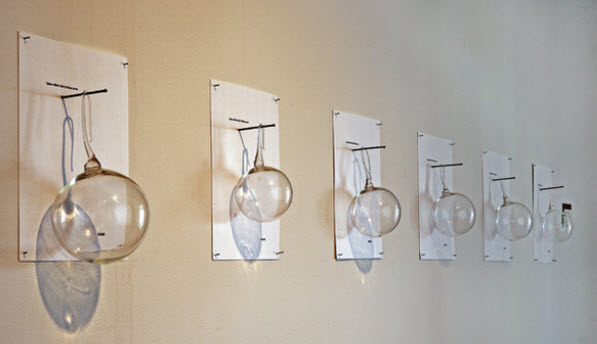The Bahamas gains its own National Pavilion at the prestigious 55th Venice Biennale Public dates: June 1–November 24, 2013 Preview days: May 29–31, 2013
Commissioner Nalini Bethel (Senior Director of Communications, The Bahamas Ministry of Tourism) is pleased to announce the appointment of Bahamian artist Tavares Strachan as the representing artist for the inaugural pavilion of The Bahamas at the 55th International Venice Biennale.
Obie Wichcombe, the Minister of Tourism for The Bahamas states, “The Commonwealth of The Bahamas is honored to have our very own Tavares Strachan represent our country in this inaugural appearance at the Venice Biennale. Our country is preparing for its 40th Independence, and this artist represents our journey as a nation and our excitement about the future. Mr. Strachan is an excellent ambassador for The Bahamas, and we congratulate him on this magnificent achievement.”
Bahamian art historian and educator and Assistant Professor of History of Art and African American Studies at Yale University, Dr. Erica M. James, comments on The Bahamas' presence in Venice and Strachan's achievements, "In a world inundated with biennials and triennials, the Venice Biennial is the standard bearer of the format – the cream of the crop. So it is an incredible accomplishment for our country to be represented there in 2013 by the work of Tavares Strachan."
Tavares Strachan may be best known for his internationally celebrated 2006 piece titled The Distance Between What We Have and What We Want, consisting of a 4.5-ton block of ice harvested in a river near Mount McKinley, Alaska. The ice was then sent via Federal Express to The Bahamas, where it was placed in a transparent refrigerated case and exhibited in Nassau. Ironically, solar power was used to keep the ice frozen.

"I Belong Here" Series by Tavares Strachan
Over the past decade, Strachan’s explorations have expanded to both outer space and under water, focusing equally on the human body’s ability to acclimatize itself to these radical environments. One of his major topics has been orthostatic tolerance—the body’s ability to circumvent hypotension and withstand pressure during gravitational stress, often caused by quick changes of altitude. Although orthostatic tolerance can describe a change as simple as the body’s reaction to standing up quickly after being seated, Strachan’s art investigates the more extreme circumstances of being launched into the earth’s stratosphere or submerged to the oceans’ depths.
Strachan’s research on the topic has extended to hands-on training at the Yuri Gagarin Russian State Science Research Cosmonaut Training Center in Star City, Russia as well as a residency at the Massachusetts Institute of Technology, where he worked with some of this institution’s cutting-edge scientists.
Dr. James adds, "Strachan has never set limits on his thinking and artistic practice. He has always known that the world belonged to his Bahamian self and that his art and his vision for this work could reach audiences from Ridgeland Park to the stratosphere. Over the past ten years he has developed an incredible body of work that defies simplistic categories of reference, and narrow and scripted modes of engagement. I am certain that he will honor our country with his installation.
"This accomplishment testifies to the amazing shifts that have occurred in Bahamian art over the last decade. I can see generations of artists emerging that will honor the Bahamas locally and on the global stage far into the future. It’s as if the arts have been on turbo boosters and for the time being at least - it is taking us all to Venice!"

"Bahamas Aerospace and Sea Exploration Center (BASEC) Rocket Launch" by Tavares Strachan, 2008/9, Digital image, 24 x 18 / In the Collection of Dawn Davies

"Yawns" by Tavares Strachan, c.2004, Hand blown glass / In the Collection of Dawn Davies
Strachan’s research is tied to his establishment of the nascent Bahamas Aerospace and Sea Exploration Center (BASEC) in his native country. In the course of working with BASEC, Strachan has made several rockets wholly from Bahamian natural resources (glass from beach sand, and fuel from sugarcane) and launched them 15 to 20 miles into the earth’s stratosphere, before collecting and presenting their fallen remnants as sculptural relics. His experimentations with BASEC and his research into extreme conditions have been the basis for exhibitions at the University of Pennsylvania’s Institute of Contemporary Art in Philadelphia (2008); Grand Arts in Kansas City, Missouri (also 2008); and MIT List Visual Arts Center in Cambridge, MA (2010).
Last year a 20,000-square-foot overview of Strachan’s work from 2003–2011, subtitled Seen/Unseen, was presented at an undisclosed New York City location and was closed to the public. Curated by Crutchfield and Hobbs, Tavares Strachan: seen/unseen is fully documented with an illustrated catalogue, designed by Stefan Sagmeister and distributed by D.A.P in spring, 2013. An interactive website dedicated to this exhibition is forthcoming.
About the artist
Tavares Strachan (b. 1979, Nassau, Bahamas; lives in New York City) received a BFA from the Rhode Island School of Design in 2003 and an MFA from Yale University in 2006. His solo shows include Orthostatic Tolerance: It Might Not Be Such a Bad Idea if I Never Went Home Again, MIT List Visual Arts Center, Cambridge, MA (2010); Orthostatic Tolerance: Launching from an Infinite Distance, Grand Arts, Kansas City, MO (2010); Tavares Strachan: Orthostatic Tolerance, the Institute of Contemporary Art, University of Pennsylvania, Philadelphia (2009); Where We Are is Always Miles Away, The Luggage Store, San Francisco, CA (2006); and The Difference Between What We Have and What We Want, Albury Sayle Primary School, Nassau, The Bahamas (2006).
The Bahamas National Pavilion is produced by Christopher Hoover and Michael Hall, in association with Christophe Thompson. Major support is granted by The Bahamas Ministry of Tourism.

Arctic Ice Project: The "Distance between What We Have and What We Want", by Tavares Strachan, 2005/6, Geometric Print, 36 x 24 / In the Collection of Dawn Davies
ClickHERE for more information regarding The Bahamas' pavilion or email info@venicebahamas2013.org





